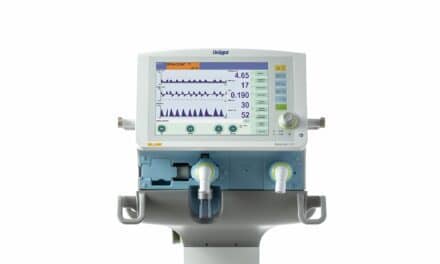The Global Initiative for Chronic Obstructive Lung Disease has issued its GOLD 2022 report and recommendations for COPD. The report — available online ahead of print in the AJRCCM — updates evidence for blood eosinophil counts as biomarker in subset of patients with COPD.
The 2019 GOLD Report issued recommendations for clinicians treating patients who may respond to inhaled corticosteroids (ICS). The report noted that blood eosinophil counts (BEC) were a helpful marker, in addition to exacerbation history.
“The GOLD science committee 2022 review has highlighted new evidence showing that higher blood eosinophil counts in COPD patients are associated with greater type 2 (T2) inflammation,” said Dave Singh, MD, professor of clinical pharmacology and respiratory medicine at the University of Manchester, UK, and one of review’s authors. “This T2 profile of inflammation can explain the differential response to treatment with inhaled corticosteroids.“
He added: “We also now understand that COPD patients with lower blood eosinophil counts have a different microbiome, which may predispose to more episodes of bacterial infections. Blood eosinophil counts can be used in clinical practice to identify COPD patients with different response to treatment, and different risk of bacterial infection.”
Below are the GOLD 2022 key recommendations:
Prediction of ICS Benefits
- BEC should be combined with exacerbation risk (using exacerbation history) to predict ICS effects.
- The relationship between BEC and ICS effects is continuous; no/small effects are observed at lower BEC, with increasing effects at higher BEC.
- < 100 cells/μL and ≥ 300 cells/μL are estimates, not precise cut-off values, to identify individuals with the lowest and greatest (respectively) likelihood of ICS benefit.
Type-2 Inflammation
- Higher BEC are associated with increased lung eosinophil numbers and higher levels of type-2 inflammation markers in the airways.The differences in type-2 inflammation can explain the differential ICS response according to BEC.
COPD versus Controls
- A subset of COPD patients has BEC above those found in controls.
Microbiome
- Lower BEC are associated with greater presence of proteobacteria, notably haemophilus, and increased bacterial infections and pneumonia.
Future Risk (of Exacerbations/Disease Progression)
- In younger individuals without COPD, higher BEC are associated with increased risk of FEV1 decline and the development of COPD.
- BEC cannot be used as a standalone biomarker of future risk without considering exacerbation risk and ICS use.
“Since it was first introduced in 2001, the GOLD report has changed how clinicians worldwide approach COPD treatment,” said Fernando Martinez, MD, editor-in-chief of the American Journal of Respiratory and Critical Care Medicine and a co-author of the review. “An estimated 391 million people aged 30-79 years old had COPD worldwide in 2019. The care of these patients requires a global and collaborative effort.”








